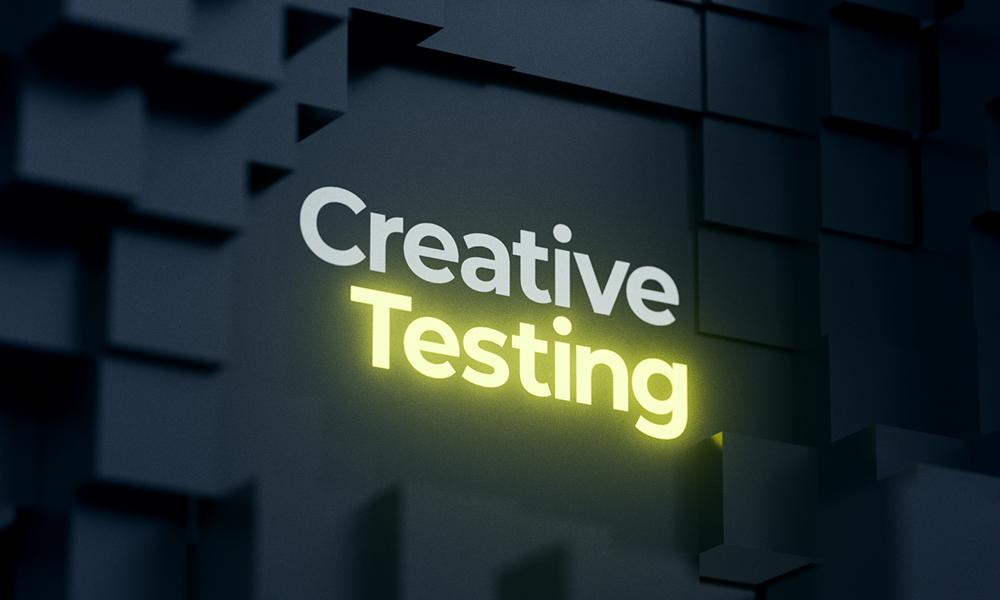The Value of Creative Testing
Creative testing is a contentious area in marketing, with divided opinions on its value. Understanding how to use it effectively is crucial for maximising campaign effectiveness.
As noted in one of our previous issues, Mark Ritson – brand consultant and marketing professor – has recently become an advocate of conducting creative testing to improve creative work. He believes that testing methodologies available today have the potential to predict success (or failure) more accurately than ever before (Ritson, M. 2024). Yet highly successful creative agencies and brands like adam&eveDDB and John Lewis openly reject it, pointedly choosing to scrap the practice in the name of protecting creativity when they set out to win the hearts of the nation every Christmas (Wood, 2020). They feel pre-testing creative only leads to safe campaigns, not great ones, so they choose to trust their own judgement to inform creativity.
Best Practice for Implementing Creative Testing Effectively
So who’s right?
At Golley Slater, we believe there can be a lot of value in creative testing as long as it is done right, in the right moment, and for the right reasons.
Firstly, creative testing should be used to improve the work, not validate (or invalidate) a specific route. It can be tempting for marketers to resort to creative pre-testing as a means for making hard decisions and reassuring stakeholders. But pre-testing is hardly a fool-proof predictor of success so it should never become a tick-box exercise.
Secondly, choosing the right methodology is key. When it comes to assessing creativity, qualitative methods are always advised, as they enable marketers to dig deeper and explore their audience’s immediate feelings and reactions towards the creative. Questioning should always be open and linked to what the work aims to achieve, not subjective opinion. Using a trusted partner is vital too – someone who understands the aims, has a robust knowledge of the methodology, is highly experienced in research and understands the creative process.
Thirdly, the moment in time you choose to test matters. Pre-testing creative in the middle of the creative development phase, when ideas haven’t been produced yet but rather exist in the unfinished form of scripts, storyboards or crude animatics, should be avoided. Not only is this kind of creative output not representative of what it will look like once produced, the typical qualitative testing environment is also not representative of how people experience adverts in real life either. As a result, focus group participants often struggle to visualise these ideas. It’s a lot to ask of the public, particularly when they’re not used to making creative decisions. Often, it means they end up disproportionally critiquing the form, not the substance.
How to get the Timing of your Creative Testing Right
Instead, marketers should either check in with their audience very early in the process to help shape the creative brief and inform creative development; or test a produced version towards the end of the process and use the feedback to make tweaks and ensure it lands as it was intended. And if testing in the middle of the process is inevitable, turning the exercise into a co-creating workshop rather than traditional pre-testing can help marketers avoid its pitfalls. By framing the session as an opportunity to capture an audience’s unique views and ideas on how to improve and evolve the work, they can avoid inviting unhelpful judgement.
Case Study: The Use of Audience Insights in Creative Development
At Golley Slater, we practice what we preach. For a new Transport for Wales campaign, we’ve involved our audience from the start. We already had a theory on the human insight we wanted to explore, but we wanted to stress test it qualitatively first. Checking in very early on in the process helped us develop a strong new positioning for the brand. This then informed our creative work. Having these in-depth discussions with the people who matter meant we knew what approach and tone we needed to achieve. The outcome is very exciting and will go live soon. None of this would have been possible without our clients, who trusted us to follow the process.
Next time you consider running creative testing, make sure you:
- Focus on improving, not validating, creative work
- Use qualitative methods and open questions to explore audience reactions in-depth
- Time your testing strategically – either very early or with near-final creative
- Turn mid-process testing into collaborative workshops to capture useful feedback
However, if you find yourself leaning on a specialist research agency to conduct testing for you, there are a few things you should do to make the most of their expertise. Our next Effectiveness Insider article will explore what marketers should think about when briefing external research agencies to get the best results.
References
Ritson, M. (2024). Pre-testing ads is not divisive, it’s a no-brainer, Marketing Week, 23 April. Retrieved May 18, 2024. (https://www.marketingweek.com/ritson-pre-testing-no-brainer/).
Wood, C. (2020). John Lewis: An amazing decade. London: WARC/IPA

